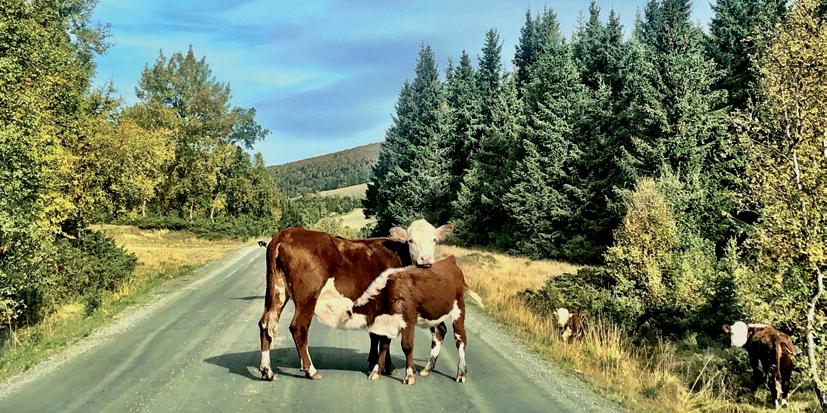
3 minute read
Norway
ancient and commercial forests. Of the 3% in agricultural use, only a smaller part is located in areas, where climatic conditions are suitable for growing cereals and with a climate which produces a lower tonnage than other European countries.
Any grassland areas are only suitable for growing grass and rearing livestock and not for arable, fruit or vegetable crops. However, one of the advantages of the cool climate, is that it limits the spread of plant diseases and pests, allowing Norway to boast one of the lowest ant-biotic usages in agriculture in the world.
Advertisement
Despite the average Norwegian consuming less than half the milk they did 30 years ago there has been a doubling in the consumption of meat over the same period. The country is selfsuffcient in milk but with little land suitable for grain and fruits, it is reliant on imports for much of its food.
The demand for organic food, has increased although the numbers of organic farms has decreased and like most of Western Europe, the numbers of farms have decreased by around 50% in the past 30 years, although the government have been keen to develop agricultural policy towards the importance of family farms.
Farm sizes, almost half of which are rented, are relatively small with the average farm size increasing from 15ha to 25ha in the past 20 years and an current dairy herd of around 28 on average. Norway produces about half the food it eats so as well as imports it is dependent on protecting its own food production.
The annual consumption of beef, veal, lamb, mutton, pork and poultry has grown steadily since the 1980s, with pork and poultry having the highest consumption. Norway is the frst country in the world with the goal of keeping their pig herds free from MRSA, which is important for public health.
Focus on nutrition and food safety has a huge infuence on the country’s meat production and consumption and has encouraged the industry to head towards using anti-biotics for treatment only and not as a preventative method. Publicity following the use of antibiotics (Narasin) in poultry in 2014 led to a signifcant drop in poultry consumption.
Through various tariff agreements within and outwith the EU, Norway has 29 freetrade agreements (FTAs) with 40 countries, is a member of the WTO (World Trade Organization) and the EFTA (European Free Trade Association). Norway is an open economy.
The status of the produce from the country is paramount in maintaining these markets and together with the emphasis on restrictions of antibiotics, Norwegian animal health and welfare are among the best in the world. The farms are smaller and well spread out, with small herds and a requirement for space per animal both indoors and outdoors in any new constructions.
For cows, there is a requirement of outdoor grazing for a minimum of two months a year, while the sheep are required to be out for a minimum of four months.
In Norway, the journey from “farm to fork” is short, making it possible to demand levels of animal welfare and to make sure
Mountain farming in Norway these demands are followed, with the added beneft of Norwegian agriculture using the second lowest amount of antibiotics in agriculture in Europe. This is the results of targeted co-operation between government, vets and farmers breeding animals that are well-adapted for the climate and conditions.
Traceability and transparency at all stages of production provide a basis for trust and confdence within the industry and its consumers, ensuring a promising future for this forward thinking country.











